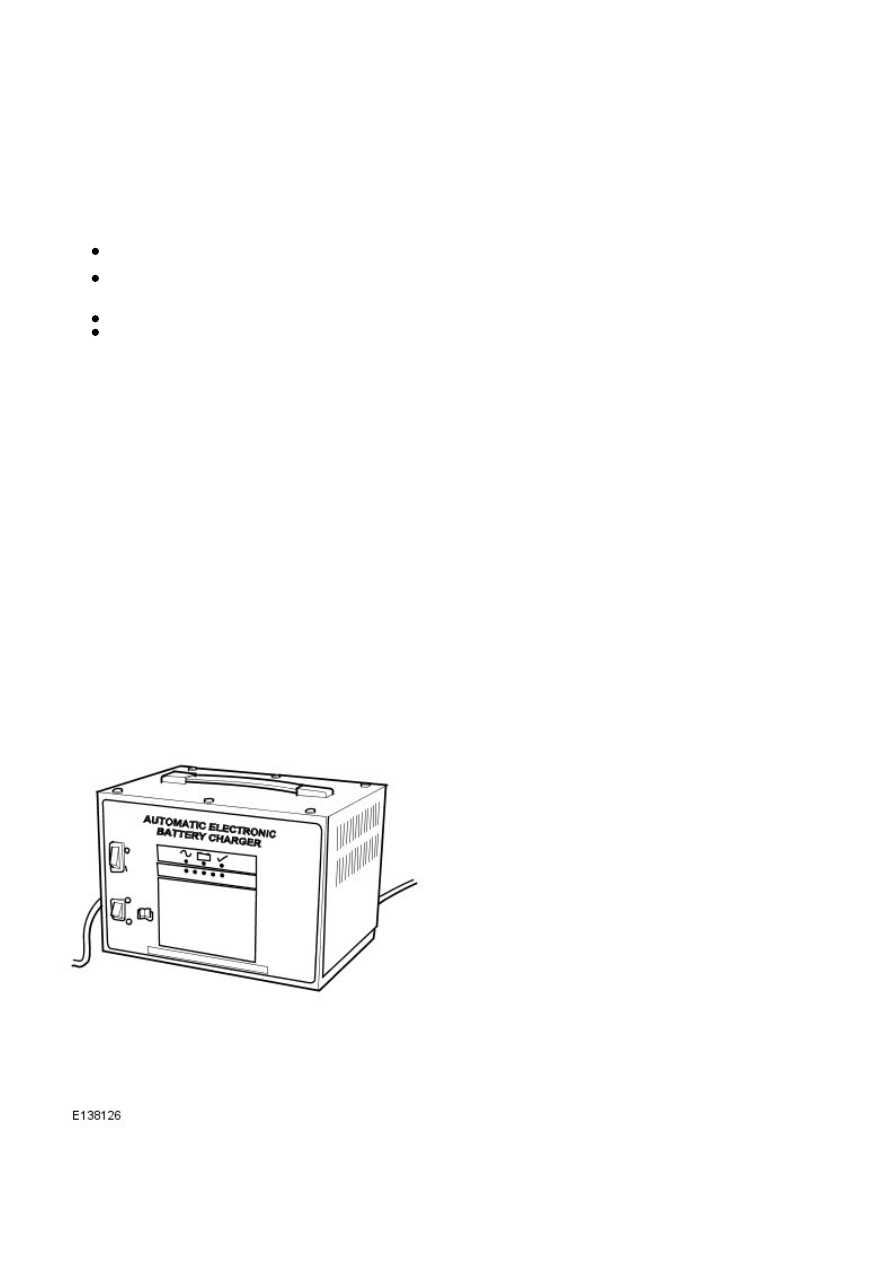Frelander 2. Manual - part 454

Due to the high depth of discharge a dealer demonstration vehicle battery may experience, batteries that are fitted to
vehicles used as dealer demonstration vehicles must be connected to a power supply / charger capable of delivering 50
Amps or more whilst the vehicle is being demonstrated and the engine is not running. This will prevent the battery from
being damaged from "energy throughput " wear out during a demonstration.
Software Reflash, SDD work or Ignition On related Workshop Activities.
Due to the high electrical current demand and high depth of Discharge that can occur during vehicle software re-flash
activities, SDD work or ignition on related work in the workshop, vehicles that are undergoing such activities MUST have
the electrical system on the vehicle supported with a power supply / charger / vehicle maintainer capable of delivering 50
Amps or more.
Jump Starting New vehicles Before They Have Been Delivered to the Customer.
It is the dealer / retailers responsibility to ensure the battery is not allowed to go flat by following the instructions
and processes defined in this manual.
However if circumstances dictate that a new vehicle must be jump started due to a flat battery whilst the vehicle is
in the dealer / retailers care, the battery on this vehicle must be replaced with a new one prior to delivery to the
customer at the dealer / retailers liability.
The vehicle should also undergo investigation as to why the battery went flat.
Do not connect the jump starting cable to the negative (-) terminal of the battery. Always connect to the
recommended earthing point. As defined in the owners handbook or service documentation for that vehicle.
Jump Starting or Boost Charging Vehicles in Service
Do not connect the jump starting cable to the negative (-) terminal of the battery. Always connect to the recommended
earthing point. As defined in the owners handbook or service documentation for that vehicle.
Charging AGM Batteries
AGM batteries must not be charged with voltages above 14.8 Volts. Doing so will damage them.
Testing AGM Batteries
Midtronics 393, 394, 493 and 494 testers are not capable of testing AGM batteries. Doing so can give an incorrect result.
When it is necessary to test an AGM battery use the Midtronics EXP1080 tester or the GR1 Diagnostics Charger.
3. EQUIPMENT (MINIMUM STANDARD) (pictures are for illustration only)
Traction Battery Charger (or similar stand-alone charger)
Midtronics EXP1080 Hand-Held Tester